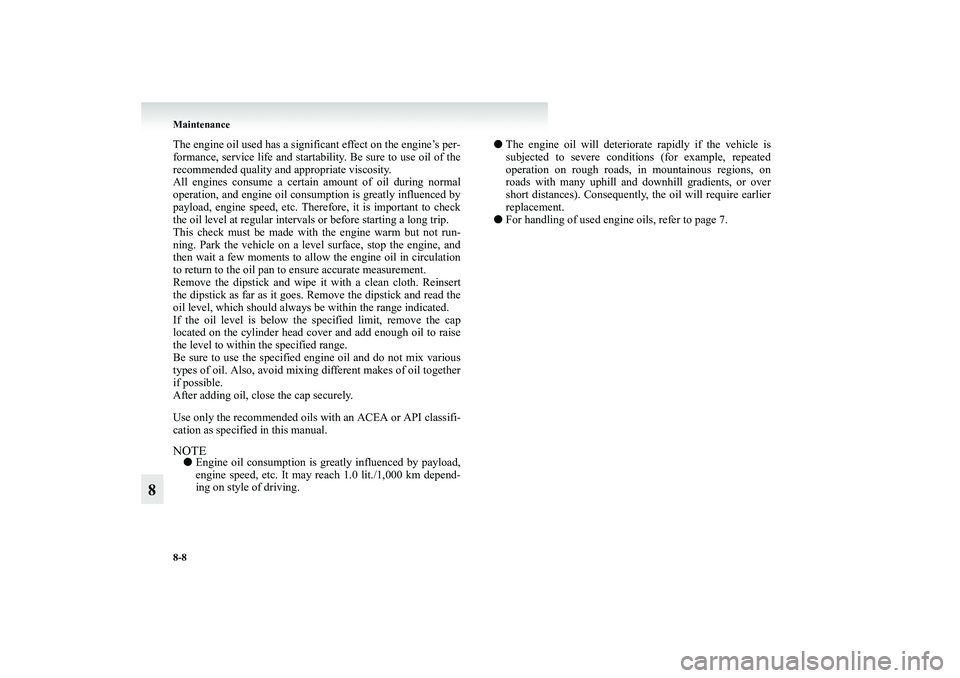8-8 Maintenance
8
The engine oil used has a significant effect on the engine’s per-
formance, service life and startability. Be sure to use oil of the
recommended quality and appropriate viscosity.
All engines consume a certain amount of oil during normal
operation, and engine oil consumption is greatly influenced by
payload, engine speed, etc. Therefore, it is important to check
the oil level at regular intervals or before starting a long trip.
This check must be made with the engine warm but not run-
ning. Park the vehicle on a level surface, stop the engine, and
then wait a few moments to allow the engine oil in circulation
to return to the oil pan to ensure accurate measurement.
Remove the dipstick and wipe it with a clean cloth. Reinsert
the dipstick as far as it goes. Remove the dipstick and read the
oil level, which should always be within the range indicated.
If the oil level is below the specified limit, remove the cap
located on the cylinder head cover and add enough oil to raise
the level to within the specified range.
Be sure to use the specified engine oil and do not mix various
types of oil. Also, avoid mixing different makes of oil together
if possible.
After adding oil, close the cap securely.
Use only the recommended oils with an ACEA or API classifi-
cation as specified in this manual.NOTE●Engine oil consumption is greatly influenced by payload,
engine speed, etc. It may reach 1.0 lit./1,000 km depend-
ing on style of driving.●The engine oil will deteriorate rapidly if the vehicle is
subjected to severe conditions (for example, repeated
operation on rough roads, in mountainous regions, on
roads with many uphill and downhill gradients, or over
short distances). Consequently, the oil will require earlier
replacement.
●For handling of used engine oils, refer to page 7.
BK-XP08E1ENUK.en-uk.book Page 8 Monday, August 13, 2007 2:20 PM
